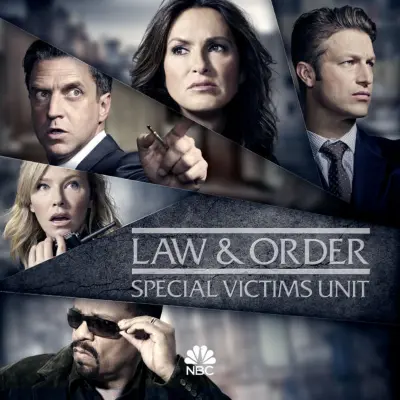The Law & Order franchise went from the format being the star to actually having stars
-

"For a decade, SVU was the last Law & Order standing (unless you count the attempt to launch a Law & Order: True Crime anthology series, whose one season, about the Menendez murders, had little in common with the franchise other than Wolf and some of his collaborators)," says Alan Sepinwall. "In the meantime, Wolf built smaller empires elsewhere, including NBC’s three Chicago-set dramas (which take place in the Law & Order universe, with occasional crossover), and CBS’ rapidly-multiplying F.B.I. franchise. But now we’re back up to two different shows under the same brand umbrella, and it’s hard not to notice that they’re built around the two original stars of SVU — a.k.a. the two characters whom L&O fans arguably know the best. (Dick) Wolf and other L&O producers, like Rene Balcer, liked to boast that there were two stars of the original series: the format, and New York City. This was perhaps yet another business-focused choice, since neither a city nor a format can demand a raise after Season Four if their Q Score gets high enough. But the original show mostly stuck to that no-nonsense brief. There was one season, the sixth, that began offering greater hints of what our heroes did away from the job; but even there, you mostly had to read between the lines to understand that, say, assistant district attorney Jack McCoy and his second-in-command Claire Kincaid were sleeping together. That season ended with an episode without a case to be solved, just the regulars exorcising various personal demons in the aftermath of witnessing a prisoner’s execution. (Most notably, Claire is struck and killed by a drunk driver while giving Lennie Briscoe a lift home from a bar.) Fan reaction to that season was mixed (the online TV forums I hung out on at the time were full of people dismissing it as a misguided attempt to copy the more popular NYPD Blue), and you could tell that the creative team didn’t feel comfortable doing it. They immediately went back into buttoned-down, 'just the facts, ma’am' mode. You would learn non-work details about the leads, but usually just in passing, or at most to explain why they might be taking a particular case more seriously than usual. The deeper personal information would have to wait for the spinoffs, Special Victims Unit in particular. Where the mothership had to very gradually immerse itself in the idea of doing more than alluding to non-work stories, SVU jumped in with both feet. Its pilot makes a conscious choice to introduce not just its heroes, but their families. With Stabler, it’s a relatively innocuous stop home so he can fix the kitchen sink, so we can see he has a happy marriage and kids. Benson, on the other hand, has dinner with her mother Serena (Elizabeth Ashley), and their conversation explains that Olivia’s biological father is the man who raped Serena. This makes every sexual assault case personal on some level for her, a fact clear to viewers even in episodes that didn’t explicitly talk about her past. In later seasons, Benson is herself assaulted, and eventually adopts a son who, like her, was the product of rape. Her job and her life are inextricably linked, and the audience knows it. Stabler, meanwhile, suffered many physical and emotional wounds during his tenure on the show, including the temporary dissolution of that happy marriage, and big problems with his kids as they grew up....Revealing more about the characters doesn’t just make the audience more loyal, but the actors."
ALSO:
- Christopher Meloni on reprising his Elliot Stabler role: “It’s such a unique experience I’m living, which is a sense of welcoming and love and just, ‘Welcome back’ and ‘We’ve missed you.’ It feels very sweet. And I’m just going, man, not too many people get this. It’s not lost on me.”
- How Meloni returns as Stabler in the SVU-Organized Crime crossover
- Here are the 20 SVU episodes that defined Benson and Stabler's relationship
- Here are the best Law & Order franchise episodes
TOPICS: Law & Order: Special Victims Unit, NBC, Law & Order, Law & Order: Organized Crime, Christopher Meloni, Mariska Hargitay
More Law & Order: SVU on Primetimer:- Law & Order: Special Victims Unit stars reunited at the Emmy Awards, sharing the moment in new photos and video
- Watch, Listen, Repeat: The Best TV Rewatch Podcasts
- Richard Belzer Was Always a Comedian First, John Munch Second
- Mariska Hargitay Pens Heartfelt Tribute to Law & Order: SVU Co-Star Kelli Giddish
